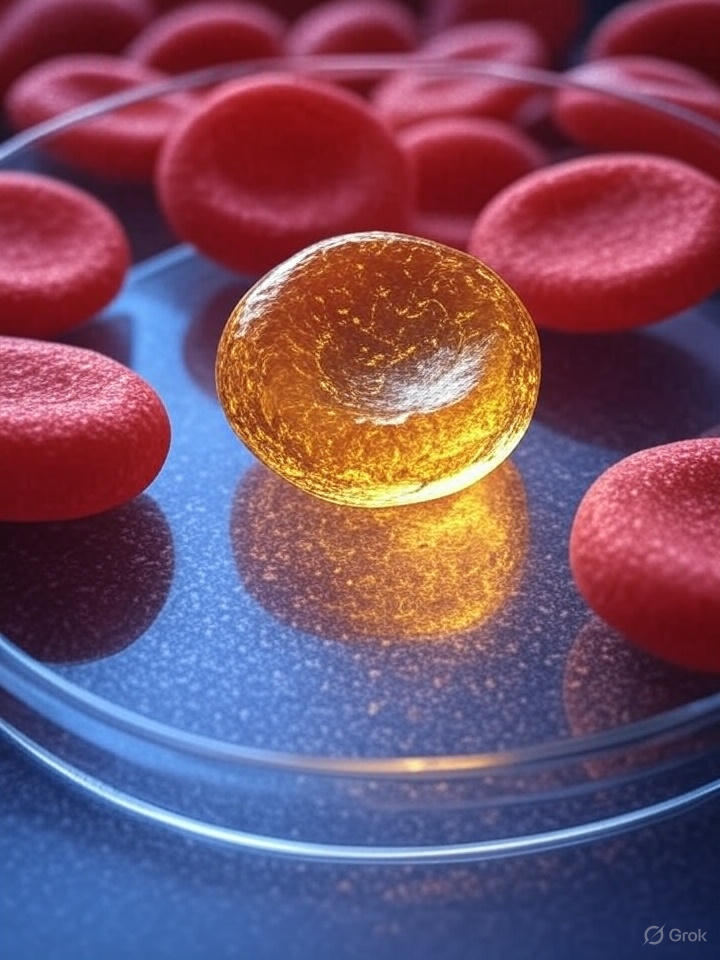CRIB Blood Group: A Landmark Discovery in Transfusion Medicine with Implications for Dentistry
August 4, 2025 – In a groundbreaking advancement in transfusion medicine, researchers have identified a novel blood group antigen, named CRIB, in a 38-year-old woman from Kolar, Karnataka, India. This discovery, announced at the 35th Regional Congress of the International Society of Blood Transfusion (ISBT) in Milan, Italy, in June 2025, marks the first identification of this antigen globally, positioning India at the forefront of immunohematology research. The findings, detailed in a recent issue of The Lancet Haematology, have significant implications for blood transfusion safety, particularly in specialized fields like dentistry, where precise blood matching is critical during complex oral surgeries. This report, inspired by coverage from DentistryUnited, summarizes the discovery, its clinical relevance, and its specific implications for dental practice, in a style aligned with high-impact medical journals like Nature or The Lancet.
Discovery and Characterization of the CRIB Blood Group
The CRIB blood group, named for Cromer (CR) and India, Bengaluru (IB), was identified during preoperative preparations for cardiac surgery at R.L. Jalappa Hospital in Kolar. The patient, initially typed as O Rh-positive—a common blood group—presented an anomaly when her blood was incompatible with all available O-positive units. Advanced serological testing at the Rotary Bangalore TTK Blood Centre revealed a “panreactive” profile, indicating incompatibility with all tested samples, including those from 20 family members. Subsequent analysis at the International Blood Group Reference Laboratory (IBGRL) in Bristol, UK, confirmed the presence of a novel antigen within the Cromer blood group system, linked to the decay-accelerating factor (DAF) protein on red blood cell membranes. This antigen, named CRIB, is characterized by the absence of a high-prevalence antigen found in most individuals, making transfusions exceptionally challenging, as only CRIB-negative blood is compatible—a type currently identified in just one person worldwide.
The Cromer system, one of 47 recognized blood group systems, involves 12 high-prevalence and 3 low-prevalence antigens, with CRIB representing a rare addition. The discovery required ten months of molecular and genetic analysis, leveraging whole-exome sequencing to identify a unique genetic mutation responsible for the CRIB antigen’s expression. This finding, published by Dr. Ankit Mathur and colleagues, underscores the genetic diversity of India’s population, which has previously contributed to discoveries like the INRA (Indian Rare Antigen) system in 2017, recognized by the ISBT in 2022.
Clinical Significance and Transfusion Challenges
The CRIB antigen’s uniqueness poses significant challenges for transfusion medicine. The patient’s immune system perceives all non-CRIB blood as foreign, triggering potentially fatal hemolytic reactions. Notably, the patient underwent successful cardiac surgery without requiring a transfusion, a testament to meticulous clinical management. However, for future interventions, autologous transfusion—where the patient donates and stores their own blood—is recommended, as no compatible donors have been identified. This case highlights the critical need for rare donor registries, such as the one established by the Rotary Bangalore TTK Blood Centre in collaboration with the Karnataka State Blood Transfusion Council and the Indian Council of Medical Research (ICMR).
The discovery also has implications for hemolytic disease of the fetus and newborn (HDFN), where maternal antibodies may attack fetal red blood cells. Early identification of CRIB could prevent severe complications in pregnancy, particularly in genetically diverse populations. Researchers are advocating for the development of CRIB-specific antibody panels and screening tests to identify carriers, especially in regions with high ethnic diversity.
Implications for Dentistry
In dentistry, blood transfusions are rare but critical in complex procedures such as maxillofacial surgeries, trauma cases, or surgeries for patients with bleeding disorders. The CRIB discovery, as highlighted by DentistryUnited, emphasizes the need for dental professionals to integrate advanced immunohematology into their practice. Oral and maxillofacial surgeons, in particular, must be aware of rare blood groups like CRIB, which could complicate perioperative blood management. For instance, during orthognathic surgery or reconstructive procedures following oral cancer resection, unanticipated transfusion reactions could arise if a patient’s blood group is misidentified or unknown.
Maxillofacial surgery in Karnataka and South India, where genetic diversity is pronounced, faces unique challenges with the discovery of the CRIB blood group. For dental professionals, particularly oral and maxillofacial surgeons, caution is paramount when treating patients potentially carrying CRIB, as incompatible transfusions could trigger severe hemolytic reactions during complex procedures like orthognathic surgery or trauma reconstruction. Mandating blood group screening, including CRIB antigen testing, before dental procedures could enhance patient safety and contribute significantly to research. If CRIB identification methods, such as serological assays or affordable molecular diagnostics, become widely available at nominal cost, routine screening could build a robust database of rare blood group prevalence in South India. This would not only improve transfusion safety but also advance immunohematology research by identifying CRIB carriers, supporting rare donor registries, and informing global blood group studies, ultimately reducing complications in dental and medical care.
The DentistryUnited analysis underscores several actionable steps for dental practitioners:
- Preoperative Blood Screening: Dental surgeons should collaborate with hematologists to ensure extended antigen profiling for patients undergoing high-risk procedures. Routine ABO and Rh typing may not suffice for patients with rare blood groups like CRIB, necessitating advanced serological testing.
- Autologous Transfusion Protocols: For patients identified with rare blood types, dental clinics should consider preoperative autologous blood collection, particularly for elective surgeries. This approach, already recommended for the CRIB patient, minimizes transfusion risks.
- Rare Donor Registry Awareness: Dental professionals should advocate for and utilize rare donor registries, which could expedite identification of compatible blood for patients with unique antigen profiles. The Rotary Bangalore TTK Blood Centre’s initiative, which has identified 21 rare donors from over 2,000 tested, serves as a model.
- Interdisciplinary Collaboration: Given the complexity of rare blood groups, dental teams must work closely with transfusion medicine specialists to manage patients with CRIB or similar profiles, ensuring safe surgical outcomes.
Analysis and Future Directions
The CRIB discovery challenges the conventional reliance on ABO and Rh systems, highlighting the need for molecular diagnostics in transfusion medicine. India’s genetically diverse population makes it a hotspot for such discoveries, as evidenced by prior findings like the INRA system. The establishment of rare donor registries and enhanced genetic screening programs is critical to addressing the challenges posed by CRIB and similar antigens. For dentistry, this discovery underscores the importance of integrating transfusion medicine knowledge into clinical practice, particularly in specialized settings.
Globally, the CRIB finding calls for investment in advanced diagnostic tools and international collaboration to standardize rare blood group identification. The development of CRIB-specific screening tests could improve transfusion safety and prenatal care, potentially reducing morbidity in complex cases. Moreover, the case exemplifies the power of interdisciplinary research, combining clinical observation, serological expertise, and molecular genetics to rewrite medical history.
Summary:
The identification of the CRIB blood group is a historic milestone in transfusion medicine, with far-reaching implications for clinical practice, including dentistry. As reported by DentistryUnited, this discovery necessitates a paradigm shift in how dental professionals approach blood management for surgical patients. By embracing extended antigen profiling, supporting rare donor registries, and fostering collaboration with hematologists, the dental community can ensure safer outcomes for patients with rare blood types. The CRIB case not only elevates India’s role in global medical research but also serves as a reminder of the complexities of human biology, urging continued innovation in immunohematology to safeguard patient lives.

